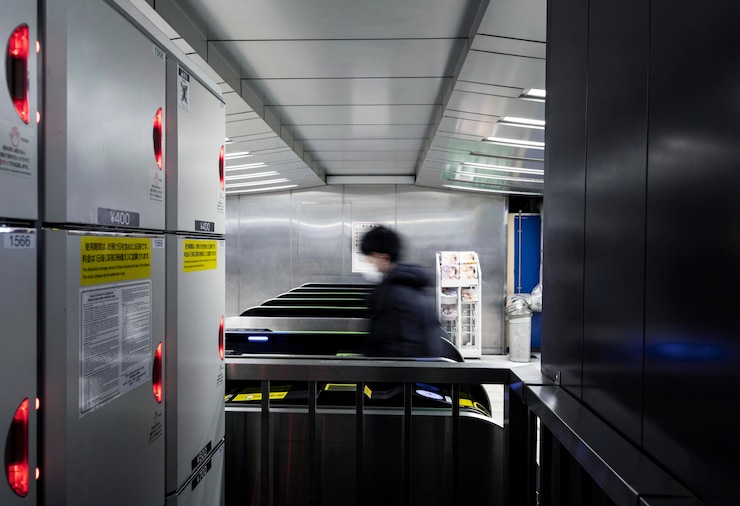After 61 Years, McDonald’s Just Revealed Some Big Plans That Nobody Could Have Predicted

This is a story about McDonald’s, trademarks, and the metaverse–plus, how to find good ideas for your business with almost no effort.
Let’s start by explaining where to look: Go to the website for the U.S. Patent and Trademark Office. Click through to the Trademark Electronic Search System.
Then, look up your competitors. Or else, search for companies that strike you as innovative and creative, or that are big enough to invest a lot into research and design and marketing.
You might be amazed at what you’ll find.
For example, suppose you’d looked up McDonald’s around the middle of February. You would have found a whole host of new trademark applications, along with the new product and service categories McDonald’s says it wants to use them for–mostly in the metaverse.
These are plans that would have been impossible to predict just a few years ago, like:
- An application for “McDelivery,” to be used for, “online retail services featuring virtual goods.”
- Or else, “McDonald’s” itself, to be used in conjunction with, “on-line actual and virtual concerts and other virtual events.”
- Or else, “McDonald’s” once more, but this time used for, “operating a virtual restaurant featuring actual and virtual goods, [and] operating a virtual restaurant online featuring home delivery.”
The list goes on, and McDonald’s isn’t alone. In the weeks after McDonald’s filed, fast food companies ranging from Arby’s and Burger King, to Dunkin’ and Hooters, to Taco Bell and Tim Horton’s all filed for trademarks in the metaverse, along with many others.
(Panera actually filed its trademark applications for “Panera” and “Paneraverse” in the virtual world the day before McDonald’s. Missing from the filings so far, surprisingly: Starbucks, Subway, Wendy’s and Chipotle.)
In terms of sheer volume and creative ideas, however, the McDonald’s applications stand out, explained Josh Gerben, an intellectual property lawyer in Washington who keeps close tabs on these filings:
“McDonald’s is unique, in that in a lot of these metaverse and NFT and Web3 trademark filings we’ve seen–they’ve all been relatively boilerplate …
‘Oh, we’re gonna be in the metaverse,’ or “Oh, we’re gonna have virtual goods.’
McDonald’s definitely had some uniqueness with their filings, and a little bit more thoroughness with some of the planning that they’re showing.”
This is probably a good time to step back and make three general points about trademarks:
- First, trademarks cover both words or marks and specific uses. That’s why the companies behind both Delta Air Lines and Delta Faucet can have trademarks using the word “Delta,” and United Airlines and United Van Lines can both trademark “United.” They’re using them for different categories of goods and services.
- Second, this “use” requirement is why companies now are rushing to register their brands for use in the metaverse. They couldn’t have predicted these kinds of uses in their original trademark filings, because the metaverse didn’t yet exist.
- Third, you can’t simply register trademarks for every possible use in order to reserve them or exclude competitors. Instead, you have to show that you actually are using them for the purposes you claim. In practical terms, you get four years (including extensions) to provide the evidence.
So, let’s piece these three points together. For example, McDonald’s originally filed to register its name as a trademark on May 4, 1961 (for “drive-in restaurant services”).
A full 61 years later–February 4 of this year–they filed for “virtual concerts and other virtual events,” as I shared above.
This tells us that there’s a very good chance that McDonald’s actually envisions hosting these kinds of virtual events under its name by February 2026–four years from filing. (By the way, I asked McDonald’s for comment on all of this, but I haven’t heard anything back.)
Now, if you’re running a business, I think there are two smart takeaways from this whole exercise.
Takeaway no. 1: Look up smart companies and see what plans they might have articulated in their trademark applications, and see if they inspire you. For example, after thinking about the McDonald’s applications, you might ask yourself:
- Can you think of creative ways to use your brand in the metaverse, even if they have little to do with your core business?
- Can you offer NFTs or other digital products? Also, a question probably more people should ask: Should you?
- Could you provide a user interface in the metaverse that allows you to sell and deliver physical products in the real world?
Takeaway no. 2: Register your trademarks. Doing so gives you an assurance that you’re not opening yourself up to legal claims that you’re infringing on someone else’s trademarks.
But also, if you ever have to enforce your rights — say, by asking a platform like Amazon to remove knock-offs of your products — chances are you’ll have to show the registered trademark to get any resolution.
“We get panic calls from people saying, I didn’t get my trademark registered, and I need to petition Amazon,” Gerben said. “It’s like, well, it’s gonna take 10 months; it’s not something we can just snap our fingers and make happen. It’s something that you really need to plan for and do in advance.”








